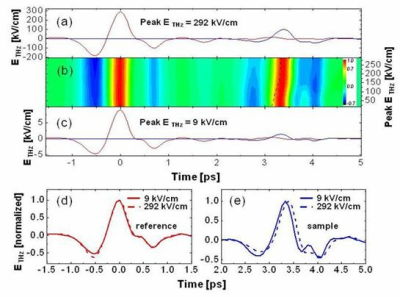The researchers at DTU Fotonik, California-based SLAC Linear Accelerator Laboratory, and Germany-based Max Planck Institute for Polymer Research - MPIP have recently stated that they have directly observed the nonlinear-optical effect.
 Technical University of Denmark (DTU)
Technical University of Denmark (DTU)
This effect has been observed in the system of single-cycle pulse of light at terahertz (THz) frequencies, which has been presented in a paper published in Physical Review B. Here, doped semiconductor acts as an effective nonlinear medium, where the response of free-electron plasma to THz electric fields contributes to THz-range optical nonlinearity.
While propagating through such medium, the single-cycle pulses of THz light shows an effect known as self-phase modulation (SPM), resulting in nonlinear reshaping and suspension of the THz pulses. Being a major effect in nonlinear optics, the SPM supports a variety of applications, ranging from ultra-high speed optical signal processing in telecom systems to supercontinuum generation for biophotonics imaging.
Regardless of its frequency range, single-cycle pulses have an inherently broad spectral bandwidth stretching across multiple octaves of frequencies. In contrast to the single-cycle pulses at optical frequencies, the THz pulses results from simple generation and detection in the time-domain based on conventional femtosecond lasers. As part of this research, the broad spectrum of a single-cycle THz pulse showed coexistence of both positive and negative refractive index nonlinearity and was resolved by the scientists. This nonlinear optics-based observation demonstrates the potential to employ THz pulses as accessible model tools for analyzing and understanding the single-cycle nonlinear optical effects.
DTU Fotonik’s Dmitry Turchinovich, Jørn M. Hvam, and SLAC’s Matthias C. Hoffmann were the authors of this work.